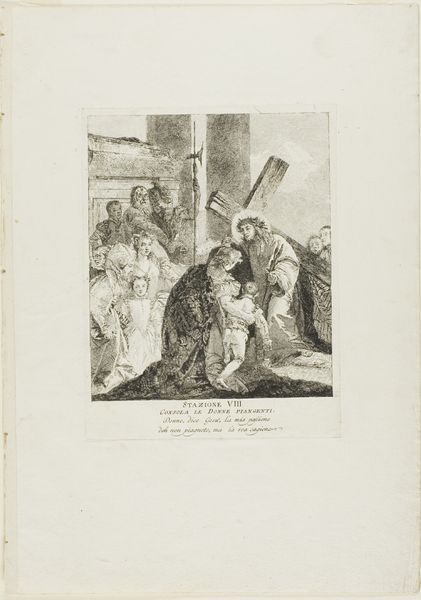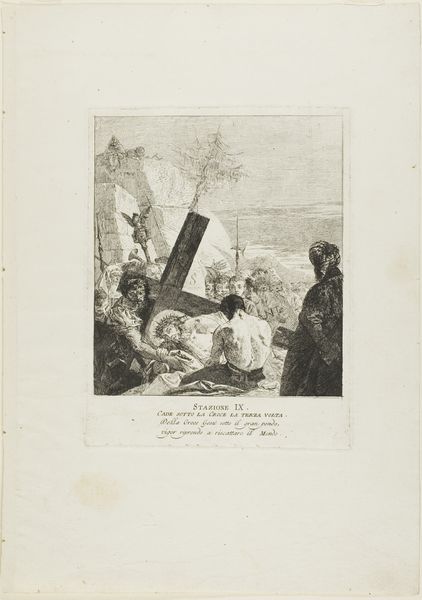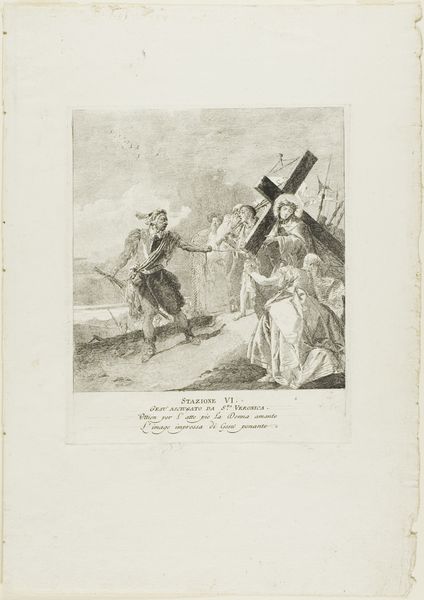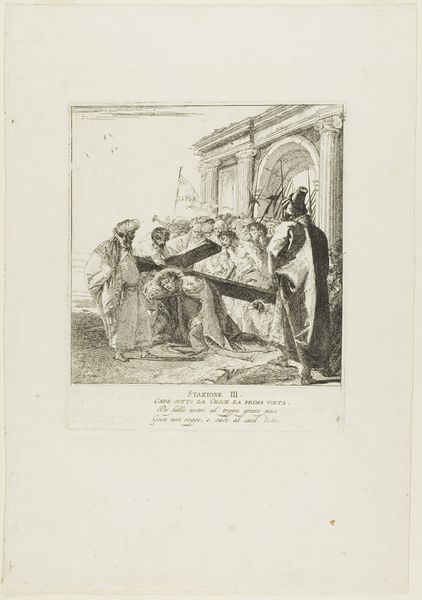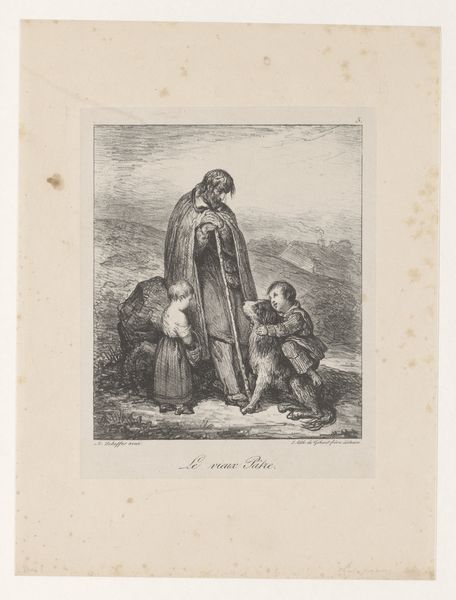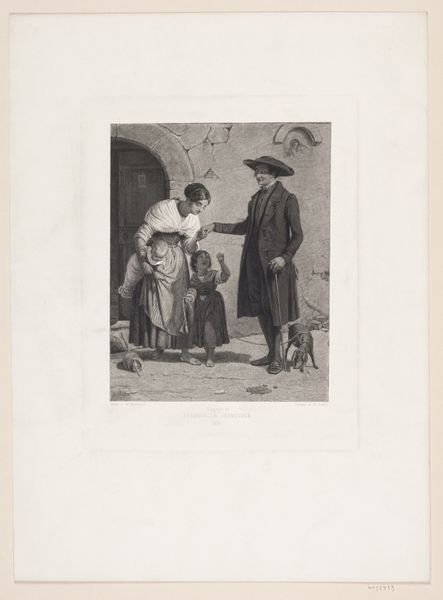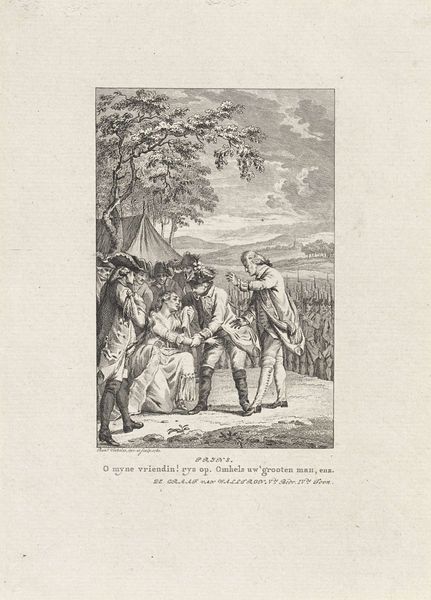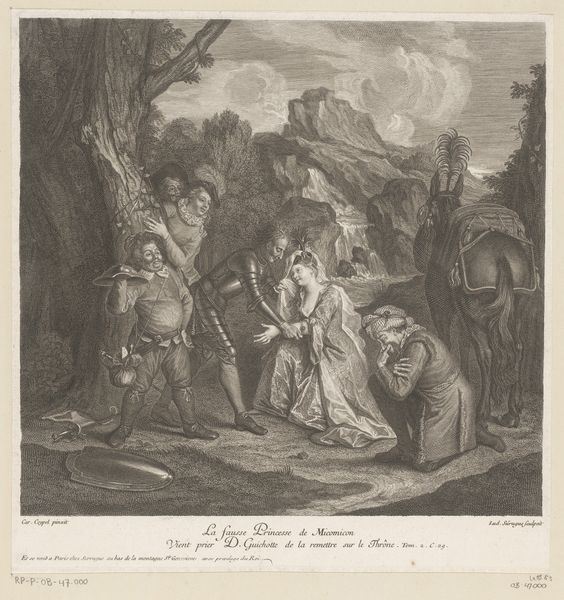
Christ Meets his Mother, plate four from Stations of the Cross c. 1748 - 1749
0:00
0:00
drawing, print, etching
#
drawing
#
narrative-art
#
baroque
# print
#
etching
#
figuration
#
line
#
history-painting
Dimensions: 223 × 178 mm
Copyright: Public Domain
Editor: This is plate four from Giovanni Domenico Tiepolo's Stations of the Cross, titled "Christ Meets his Mother," dating from around 1748 or 1749. It’s an etching, and it feels incredibly heavy and sad, the linework conveying such grief and struggle. What do you see in this piece? Curator: The weight of sorrow is palpable, isn’t it? And yet, consider the recurring visual motifs: the draped figures, the landscape reduced to expressive lines, the cross itself. Doesn’t it all seem deeply embedded in the cultural memory of suffering and redemption? Think of similar imagery throughout art history – where else have you seen similar compositional devices used to depict anguish and empathy? Editor: I guess I see similar motifs in other religious works, particularly depictions of the Virgin Mary, or other moments of Christ's passion... but what exactly are you focusing on when you speak about 'cultural memory?' Curator: It's about how certain symbols, visual cues, and compositional structures become embedded in our collective understanding, shaping our emotional responses. Here, the draped figure of Mary, the burden Christ carries--they resonate beyond this specific image, drawing on centuries of shared cultural understanding about sacrifice and loss. They almost become characters or placeholders within a cultural narrative we instantly recognize. Editor: So, it’s like the image triggers pre-existing feelings and ideas based on previous exposure? Curator: Precisely. It creates an immediate connection, a sense of recognition that amplifies the emotional impact. The scene of meeting invokes motherhood, while the cross alludes to his imminent demise. Editor: I hadn't thought of it in those terms before, seeing the symbols as active participants in a broader cultural conversation. It adds a whole new dimension to the viewing experience. Curator: Indeed. Visual culture continues a long dialogue between viewers, artwork and the world surrounding.
Comments
No comments
Be the first to comment and join the conversation on the ultimate creative platform.
